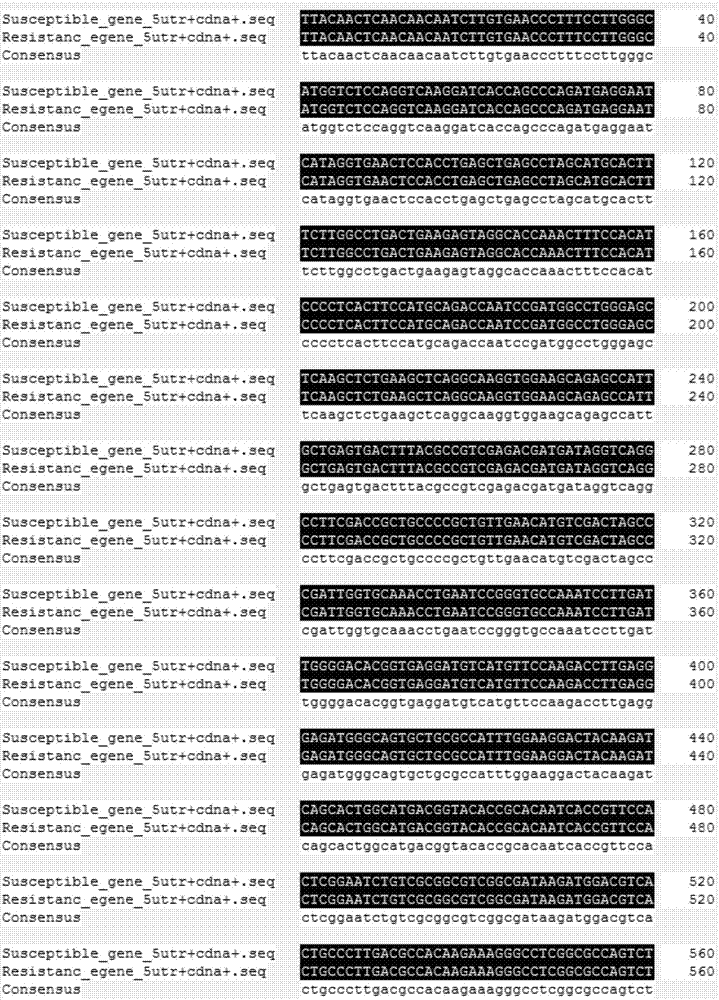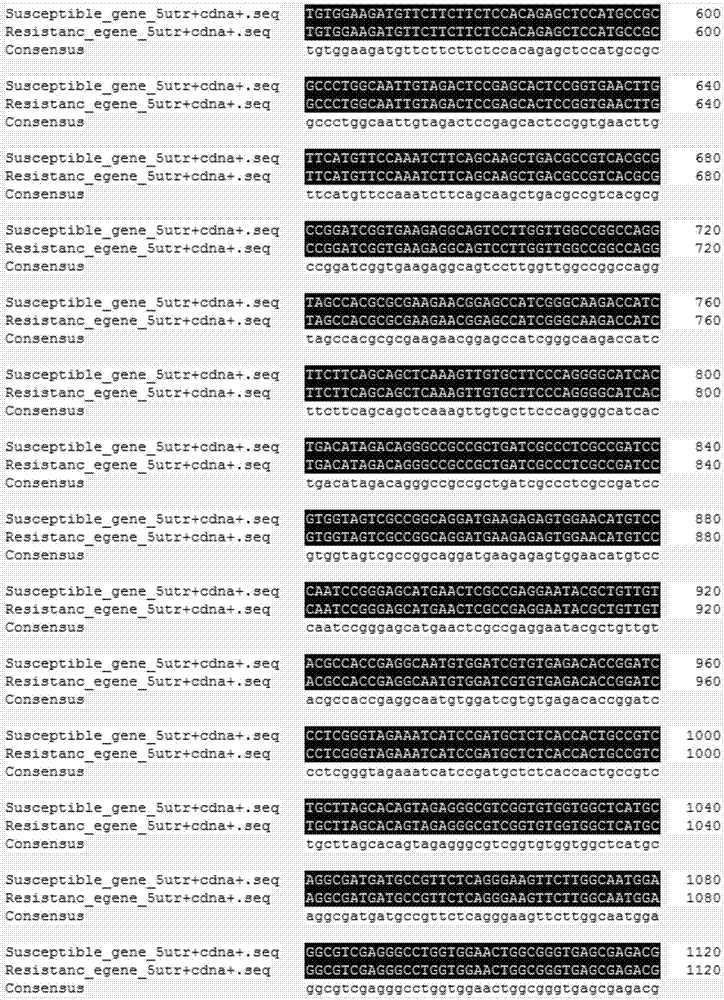SNP marker location for rice bacterial leaf streak resistant gene BLS2 and application of SNP marker location
A kind of thin stripe disease and gene technology, applied in the field of molecular biology, can solve the problems of less research on molecular genetic mechanism and in-depth research on molecular basis, and achieve the effect of improving selection efficiency
- Summary
- Abstract
- Description
- Claims
- Application Information
AI Technical Summary
Problems solved by technology
Method used
Image
Examples
Embodiment 1
[0037] 1. Construction of Multiparent Advanced Generation Inter-Cross (MAGIC)
[0038] Before constructing the population, the resistance identification of the three parents was carried out, and the results were as follows: O. Susceptible 998R hybridization, F1 self-crossing for 10 consecutive generations, obtained Multiparent Advanced Generation Inter-Cross (MAGIC) S10, and carried out resistance identification on the obtained multi-parent Advanced Generation Inter-Cross (MAGIC) population, Obtain 30 extremely disease-resistant individual plants and mix them to construct a disease-resistant pool (N915) for sequencing; obtain 30 extremely susceptible individual plants and mix them to construct a disease-resistant pool (N908) for sequencing.
[0039] 2. Identification of resistance
[0040] At the tillering stage of rice, the representative strain JZ28 (type Ⅲ) of dominant pathogenic bacterial leaf spot widely distributed in Guangxi was used for inoculation. After the strain ...
PUM
 Login to View More
Login to View More Abstract
Description
Claims
Application Information
 Login to View More
Login to View More - R&D
- Intellectual Property
- Life Sciences
- Materials
- Tech Scout
- Unparalleled Data Quality
- Higher Quality Content
- 60% Fewer Hallucinations
Browse by: Latest US Patents, China's latest patents, Technical Efficacy Thesaurus, Application Domain, Technology Topic, Popular Technical Reports.
© 2025 PatSnap. All rights reserved.Legal|Privacy policy|Modern Slavery Act Transparency Statement|Sitemap|About US| Contact US: help@patsnap.com



